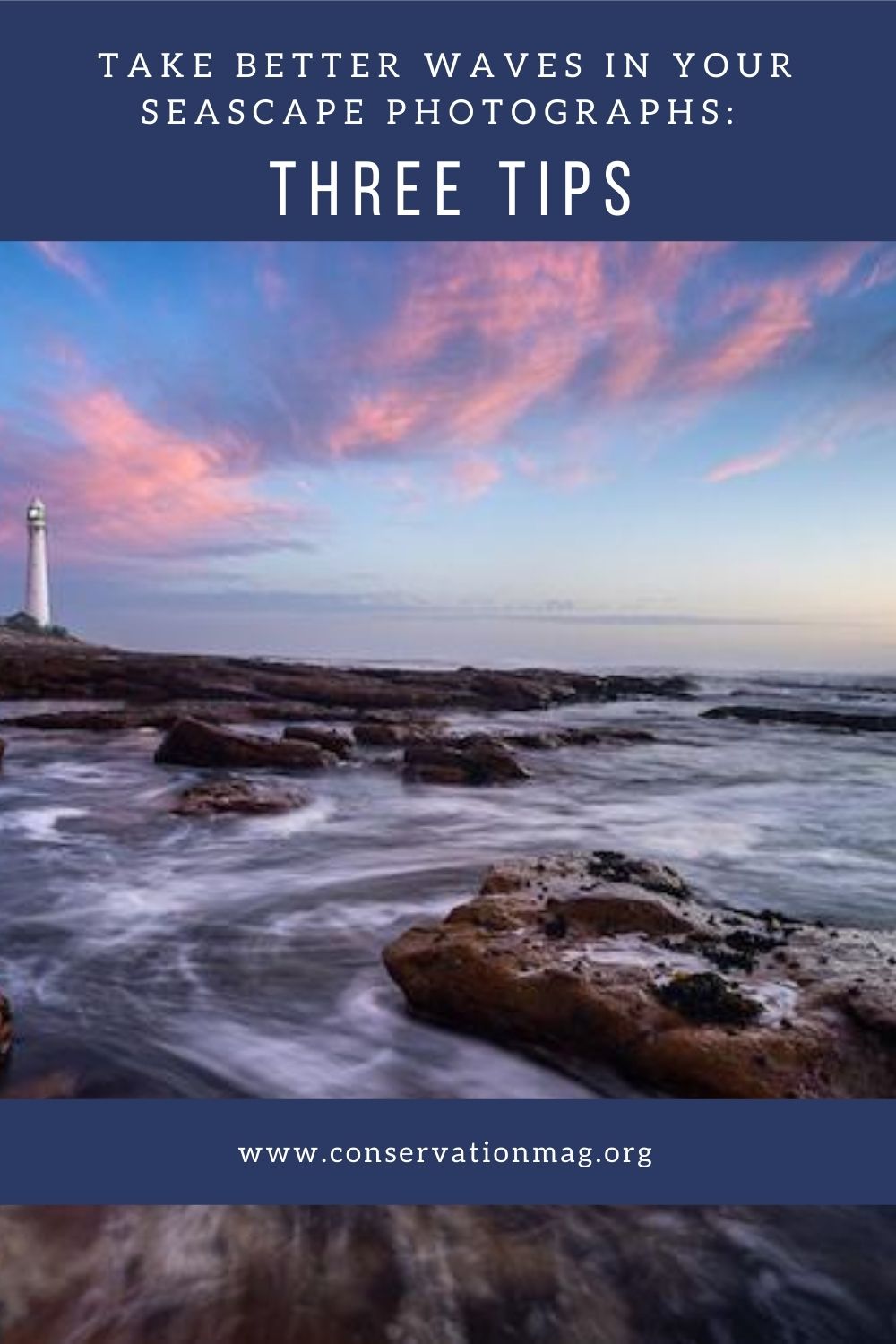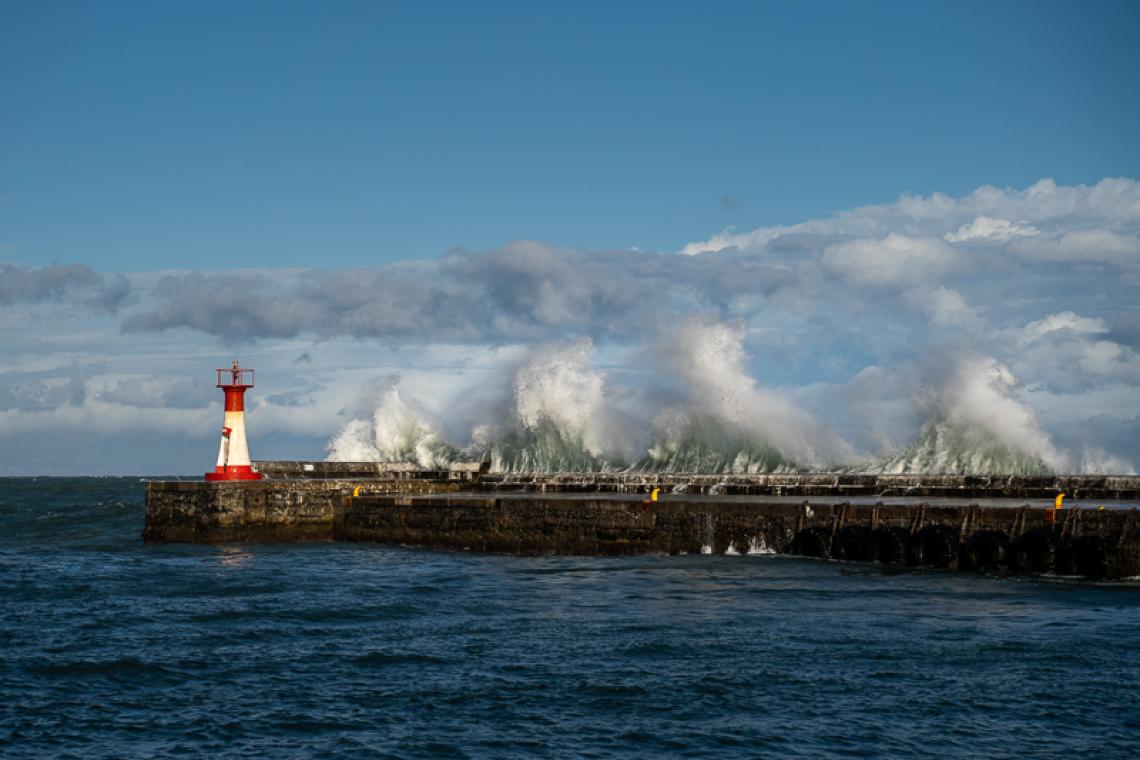Understanding how to differentiate different wave types and how to approach them makes creating your seascape compositions much easier. I like to divide the types of ocean shots into 3 categories: long wispy exposures, wave trails (mid-level exposures) and freeze motion (fast exposures)
As a working photographer, nothing quite beats being out in nature with a seascape in front of you and a camera in hand. Whether the ocean is wild with thundering white waves or standing peacefully still so clear that you can stare into its depths, I feel a deep connection with the spaces where land and water meet.
Believe me, capturing a seascape is as challenging as they get – there’s sea spray, there’s slippery rocks, and to top it all off, if you aren’t looking a rogue wave can leave you drenched with a flooded camera.
When looking at those waves in front of you it makes a huge difference to think about what type of shots you would like to get.
Seascapes are all about capturing waves in motion, and for that, controlling your shutter speed is critical – so now is the perfect time to cast off your reliance on auto and turn your dial to shutter priority and manual modes.
Once you start understanding that certain waves can produce certain shots, it makes approaching your compositions much easier. I like to divide the types of ocean shots into 3 categories: long wispy exposures, wave trails (mid-level exposures) and freeze motion (fast exposures)
Key to this is going out and taking a few minutes to really look at what the ocean is doing. As you notice ocean is in constant flux and depending on the season and tide a coastline can change quite dramatically. From where the water is touching to where the light is touching the waves can be doing completely different.
Since I started thinking more about what the waves are doing, and how I can use shutter speeds to enhance that motion, my images took a leap in quality – so give it a go with these helpful strategies to improve your shooting waves.

High waves at Kalk Bay, Cape Town. 1/1000th second at f5.6 on ISO 100. Photo Jay Caboz
Freeze Motion
These are fast shutter speeds anywhere 1/60 to 1/2000 and faster. At these speeds, you wouldn’t need a tripod. These are perfect speeds for catching massive waves as they roll harbour walls and lighthouses.
Timing for these shots is essential. Try to capture the wave at its apex for that wow moment and look for objects that can provide a sense of scale for maximum effect. Don’t be afraid to set your camera onto burst mode and shoot dozens of frames.
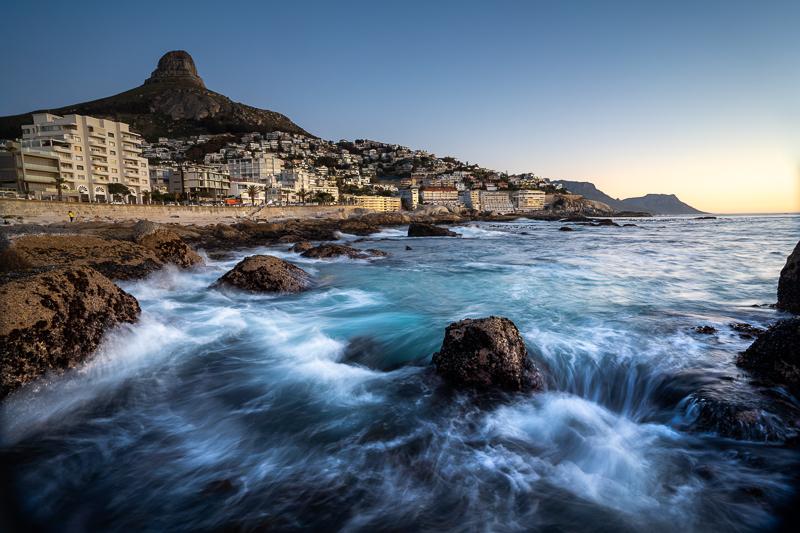
Low tide at Banty Bay, Cape Town. 0,8 second at f8 on ISO 100. Photo Jay Caboz
Wave trails – mid-level exposures
Wave trail wave-type shots require shorter exposures but still require a tripod. You can typically get them shooting at shutter speeds of 1/20 – 2 seconds, depending on how ferocious the waves are. These types of shots are perfect for capturing waves as they swirl in-between rocks or up long empty beaches.
I typically shoot seascapes in these zones convey a sense of motion and a sense of power. Pay attention to the where foam flows to make for one-of-a-kind abstract shapes as they swirl around objects.
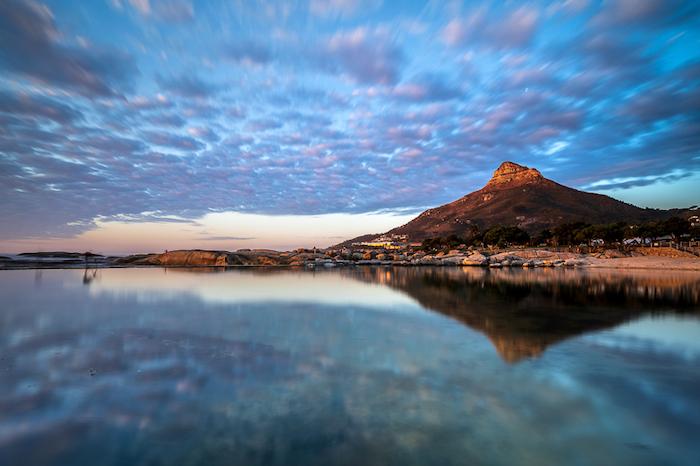
Long exposure at Camps Bay Tidal pool, Cape Town. 30 second at f11 on ISO 50. Photo Jay Caboz
Long exposure shutter speed for wispy waves
It’s one of the questions you get asked quite a lot as a landscape photographer – how do I get those cool wispy waves? - and it’s not as difficult to replicate as people think.
These types of shots are perfect for capturing minimalist piers and isolated boats and perfect reflections in tidal pools.
The trick is you need a tripod or solid place to balance your camera because you are going to be dealing with very slow shutter speeds and don’t want your camera to move at all.
Once you’ve found a good perch, set your ISO down to 100 and then start working your shutter speed to 5 seconds and/or longer. Then balance out your aperture. At sunset, you should be able to shoot at f-stops of f8-f16, depending on the light.
What you are trying to do is capture the movement of the waves over these long exposure times which gives the waves their wispy movement. Because the rest of the elements in your image are for the most part stationary, the waves will move in and out of the shot and create abstract motions.
Depending on the capabilities of your camera you typically push this to 30 seconds. But you can go way beyond that if you shoot on BULB mode and hook your phone up to a remote trigger. Most cameras these days come with an in-built wi-fi so you can even hook your camera up to your phone to do the same thing.
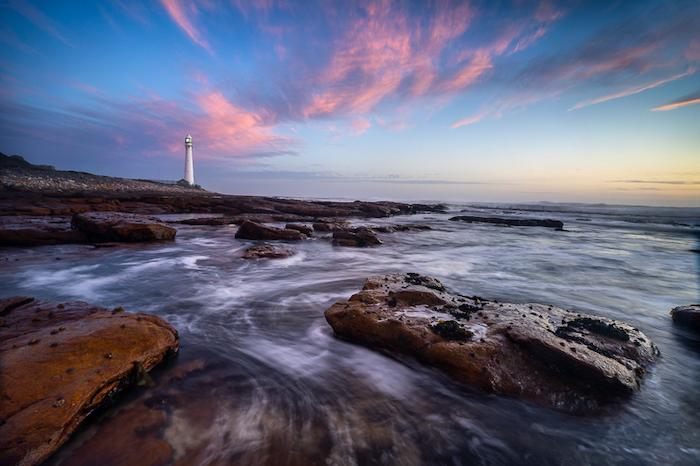
Sunset at Slangkop lighthouse, Cape Town. 1,3 second at f13 on ISO 100. Photo Jay Caboz
Bonus advice – look at purchasing ND filters
One thing you will immediately notice when attempting wave trails or wispy waves is that your photos will come out white and overexposed, especially during the day. Why? Well, it's too bright and your camera might not be able to make its aperture small enough to reduce the amount of light hitting your sensor.
If you are having trouble with that, it’s time for you to invest in ND filters, which will help reduce the light the camera sensors pick up, as a pair of sunglasses do on a sunny day at the beach.
You can buy them at your local camera shop, but they are a pricey investment, I would recommend as a starting point looking for 3 stops – ND filter and even a 0.9 soft graduated filter if you can.
Neutral Density(ND) Filters at Amazon.com | Amazon.co.uk
As someone that doesn’t like editing my images in Photoshop investing in a decent set of filters was one of the single best investments I have ever made.
Still, if you aren’t shooting during the day, shooting at sunset or into the evening are great times to experiment with long exposure shutter speeds.
Shop for a cause
Shop on amazon.com | amazon.co.uk

